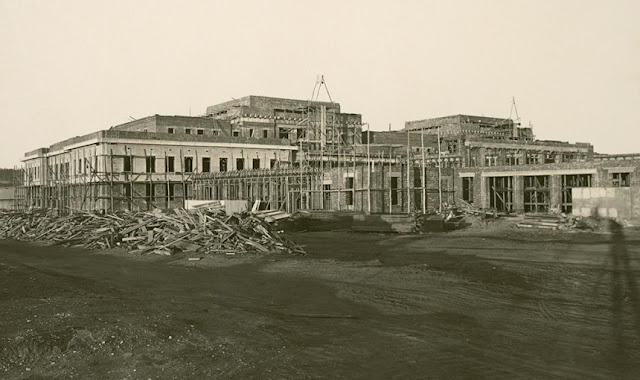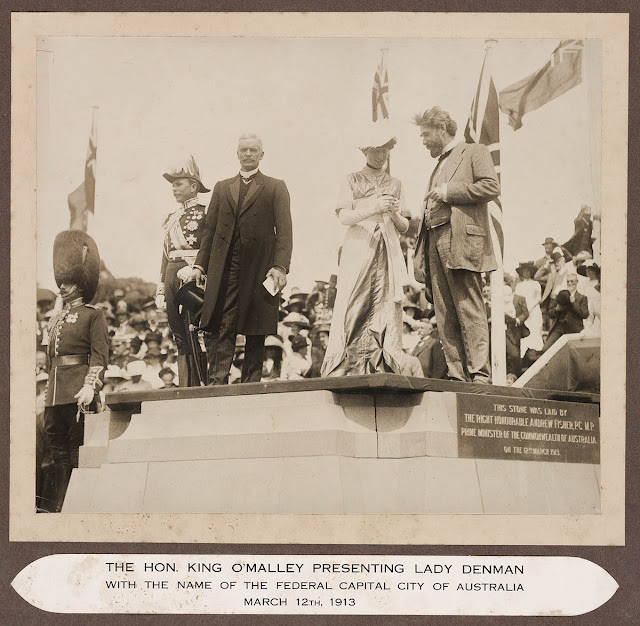______________________________
Good morning readers.
As you can tell from Bytes being back, I have returned from a trip to Canberra where I went to attend a funeral.
______________________________
Canberra – Some fun facts and trivia . . .
______________________________
Canberra is the capital city of Australia, has a population of 381,488 and is Australia's largest inland city. The city is located at the northern end of the Australian Capital Territory (ACT).
______________________________
A resident of Canberra is known as a "Canberran".
A Canberran since 1949, my father in law, Noel. He drives, is an active company director in a large company, is undertaking various courses of study and is an avid reader. He also happens to be 89.
______________________________
Canberra Coat of Arms
The various symbols of the coat of arms are the following:
· The crown symbolises Royal authority;
· The mace symbolises the Parliament of Australia;
· The sword symbolises the Sword of State;
· The castle has three towers, symbolising the three branches of government (executive, legislature and judiciary);
· The White Rose is the badge of the Duke of York who opened the old Parliament of Australia building in 1927, and who would later be crowned as King George VI.
· The crowned portcullis again symbolises the parliament, this being the traditional symbol of the Palace of Westminster (which houses the Parliament of the United Kingdom);
· Behind the portcullis is a Gum tree which symbolises Canberra's nickname "The Bush Capital";
· The supporters are ideally the Australian black swan, representing the Australian Aborigines, and the European white mute swan, representing the white settlers.
· The motto is "For the Queen, the Law and the People" which is the English translation of "Pro Rege, Lege et Grege", a common motto in European history.
______________________________
The site of Canberra was selected for the location of the nation's capital in 1908 as a compromise between rivals Sydney and Melbourne, Australia's two largest cities.
Section 125 of the Commonwealth of Australia Constitution Act provides:
The seat of Government of the Commonwealth shall be determined by the Parliament, and shall be within territory which shall have been granted to or acquired by the Commonwealth, and shall be vested in and belong to the Commonwealth, and shall be in the State of New South Wales, and be distant not less than one hundred miles from Sydney.
Such territory shall contain an area of not less than one hundred square miles, and such portion thereof as shall consist of Crown lands shall be granted to the Commonwealth without any payment therefor.
The Parliament shall sit at Melbourne until it meet at the seat of Government.
______________________________
It is an entirely planned city, similar to Washington DC in the United States.
______________________________
Designers Walter Burley Griffin and Marion Mahoney Griffin won the international contest for the city's design. The Griffins' plan featured geometric motifs such as circles, hexagons and triangles, and was centred on axes aligned with significant topographical landmarks in the Australian Capital Territory.
Portrait of Walter Burley Griffin and his wife Marion Mahony Griffin, Castlecrag, Sydney, July 27, 1930
______________________________
Burley Griffins’ design for Canberra has been linked by many different theorists to esoteric places such as Stonehenge, Ancient Glastonbury and the Great Pyramids of Egypt. The plan has also evoked speculation of links to symbolism such as the Kabbalah, Freemasonry and the Occult. Whether such interpretations are correct or not, people seem to see more in Burley Griffin's plan than simple architectural geometric design.
Walter Burley Griffin's Plan of Canberra as finally revised and accepted 1913
______________________________
Construction commenced in 1913.
Old Parliament House during construction in 1923
______________________________
The city's design was influenced by the garden city movement and incorporates significant areas of natural vegetation that have earned Canberra the title of the "bush capital".
______________________________
The growth and development of Canberra were hindered by the World Wars and the Great Depression, which exacerbated a series of planning disputes and the ineffectiveness of a procession of bodies that were created in turn to oversee the development of the city.
The national capital emerged as a thriving city after World War II, as Prime Minister Sir Robert Menzies championed its development and the National Capital Development Commission was formed with executive powers.
Prime Minister Menzies with President John F Kennedy, 1963
______________________________
Blundells Cottage is a six-roomed stone cottage located on the northern shore of Lake Burley Griffin. Built around 1860, it is one of the few remaining buildings built by the first settlers of Canberra. Today it is a museum open to the public. The cottage is significant, being one of the few stone buildings of its type to have survived intact in the Australian Capital Territory and reflecting a way of life on a nineteenth-century agricultural estate.
______________________________
There are different views as to how Canberra received its name:
· That the land upon which the city was to be built was mostly in the parish of Canberra, that having been originally Canury after the district of Canbury in Kiongston on Thames in England, from 1845 spelt Canberry and by 1862 Canberra.
· That it came from the name of the property "Camberry Station" on which the centre of Canberra was later built, and this came from Joshua John Moore, the owner, original residence in Cambridge UK.
· That it was named after the profusion of Cranberries growing in the area.
· That the word Canberra is derived from the renditions into written English of the name of the location Ngambri, which was north of the Molonglo river along Sullivans Creek.
______________________________
On 12 March 1913 a naming ceremony was held on the slopes of Capitol Hill.
Lady Denman, the wife of the Governor-General, Sir Thomas Denman, announced the name of the future capital city with the words, "I name the capital of Australia, Canberra."
The name of the capital chosen by the Cabinet was kept secret, even from the Governor-General, until the moment of its announcement. At noon, Mrs O'Malley presented to Lady Denman a gold case containing a card on which the chosen name was written.
As well as the choice of name there had been much discussion in the Cabinet as to how the new name should be pronounced. It was decided that whatever pronunciation Lady Denman gave when she read out the name would be the one officially adopted.
She proclaimed the name with the accent on the "CAN" (that is, as Can-brah, not Can-bear-rah) thus setting its future pronunciation.
Sir Thomas Denman, in a speech made that same day, said "Here a city may arise where those responsible for the government of this country in the future may seek and find inspiration in its noble buildings, its broad avenues, its shaded parks and sheltered gardens - a city bearing perhaps some resemblance to the city beautiful of our dreams".
Lord Denman also laid a commemorative foundation stone
Lady Denman was to become known as 'chairman' of both the National Federation of Women's Institutes and the National Birth Control Association in Britain. She was also active in the cause of women’s suffrage.
The Sydney ferry Lady Denman, in service until 1979, was named after her. T is now the primary attraction at the Jervis Bay Maritime Museum at Huskisson, New South Wales, where it was built
The date of the naming ceremony is now celebrated in the national capital as "Canberra Day", a public holiday celebrated on the second Monday in March each year.
Lady Denman scans the slip of paper on which is written the name of Australia's capital, at a ceremony on 12 March 1913. The name had been kept a close secret until the ceremony. She then announced the name, Canberra. L-R: King O'Malley. Minister for Home Affairs; Prime Minister Andrew Fisher; and Lady Denman's husband, Governor-General Lord Denman.
Lady Denman
Lord Denman
______________________________
King O'Malley (1854-1953) drives the first survey peg at Canberra, 20 February 1913. O’Malley is especially remembered for his role in the selection of Canberra as the national capital, the establishment of the Commonwealth Bank and for taking the “u” out of the Australian Labor Party.
(O’Malley was American born where “labour” is spelt without the “u”. He managed to convince the party to “modernise” by spelling it “labor”, a change that also made it easier to distinguish references to the party from the labour movement in general.)
O'Malley at the naming of Canberra ceremony


















No comments:
Post a Comment
Note: Only a member of this blog may post a comment.